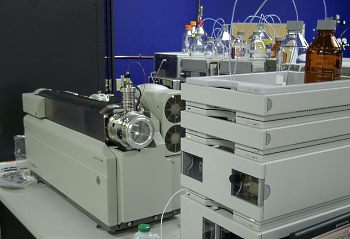property>molecular weight
What is Molecular Weight?

In more modern contexts, molecular mass is used instead of the more antiquated term molecular weight. The molecular mass, or weight, of a given molecule is the mass of one molecule of a given substance relative to the unified atomic mass unit u (a number that is 1/12th the mass of one isotope of carbon-12). This is not to be confused with the molar mass of a molecule, which is determined from a large sample of molecules of a substance, meaning it is the average size of a molecule with isotopes included. While molar mass works for almost all stoichiometric situations, it does not work with single molecules. For most amounts of substance, using the molar mass will result in less errors, but the entire system becomes very error prone when substituting molar mass for the molecular mass of a single molecule and doing calculations at that level.
The molecular mass of a molecule is computed by taking the sum of the molecular masses of all of the isotopes that compose it. For most practical purposes, one can find the values for the masses of the isotopes in the periodic table. There are sound physical reasons why it is possible to combine molecular masses in this way. The kinds of reactions that connect molecules and atoms together are considered to have relatively weak binding energies. This translates to an insignificant change in mass due to bonding. Einstein’s equation E = mc2 equates a change in energy to a change in mass, but when this number is very small (on the scale of 10-9), we suffer no large error from adding the molecular masses of isotopes together to get the molecular mass of the molecules they make when combined through these weak electrical forces. A contrary area where we wouldn’t be able to do this is with nuclear reactions such as the fusion of two hydrogen nuclei into helium. The reason, here, is because this kind of reaction converts a much larger mass into energy. Our error would be too great.
The molecular mass of a molecule can also be measured with mass spectrometry. A mass spectrometer separates a molecule into ions and then measures the mass to charge ratio of these ions. Because mass spectrometry uses this method, the resulting weight is reported as the monoisotopic mass of the molecule. This means we are assuming that the molecular mass in question is one in which the molecule contains only the most common isotopes and doing so by measuring the sum of the masses of their atoms. The values of monoisotopic mass are not published with the periodic table and need to be found elsewhere. When using mass spectrometry on larger molecules, chemists will use the average molecular mass of its isotopes because the likelihood that one is dealing with many different kinds of isotopic mixes is higher. One can get a an idea of the theoretical value of these different average molecular masses from the periodic table by using the standard weights and measures.